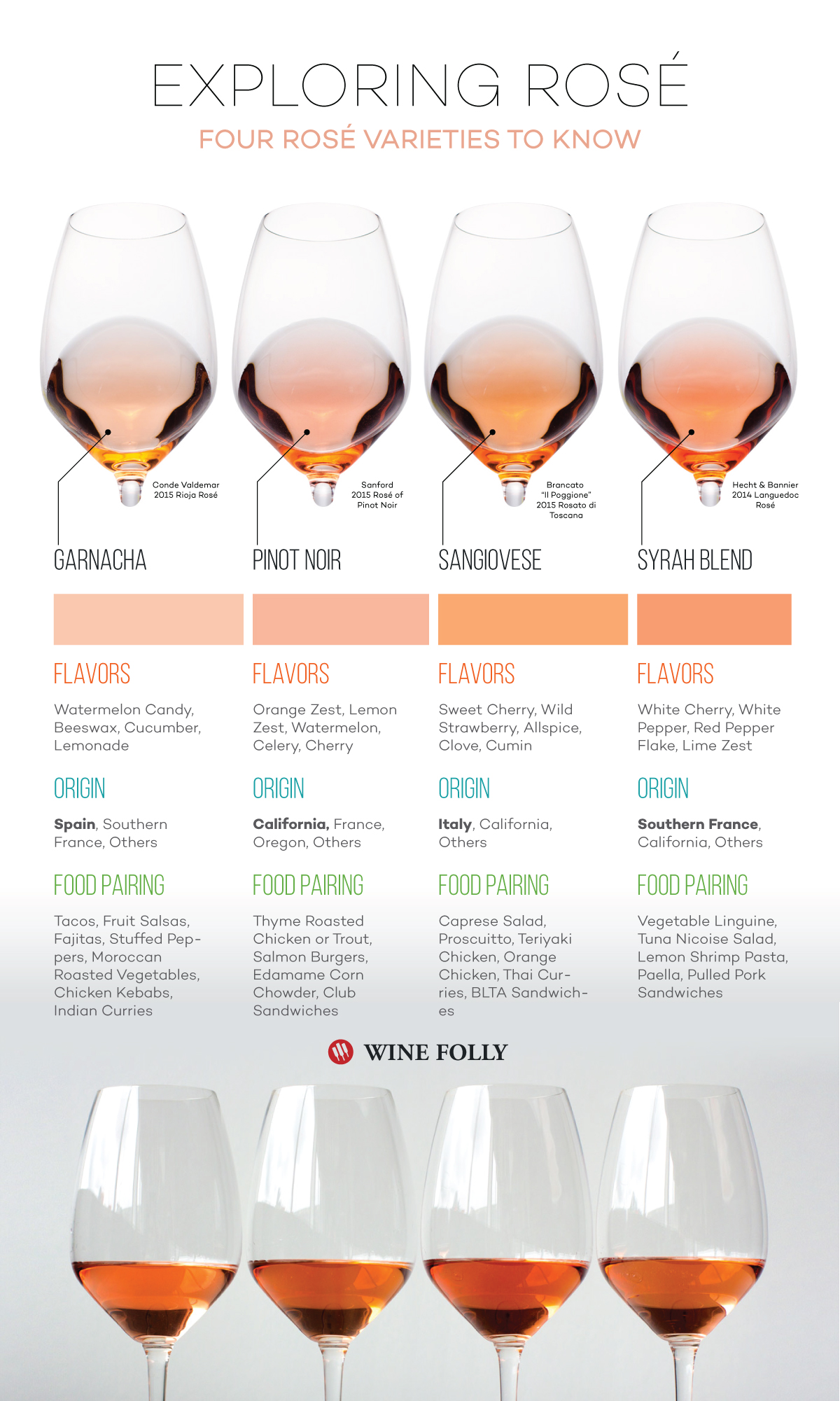These four rosé wine varieties produce some of the most popular pink wines out there. Of course, they may look similar in a glass, but taste very different from one another. Try each one to find which dry rosé you like the best.
Rosé wines may look similar in color, but there are a wide variety of flavors within this growing category of wine. The major differences of rosé wines result from the varieties they’re from which they are made. Find out about four popular rosé wine varieties, how they taste, and what foods to match with them.
Grenache Rosé
Grenache is one of the top varieties used in popular Provence Rosé blend. You’ll also find it used in Northern Spain where it’s called Garnacha Rosado.
- Flavors: Strawberry, Raspberry, Watermelon Candy, Lemonade, and Cucumber. Wines have a burst of sweet red fruit flavors and a finish that usually ends with zesty sweet lemon-like acidity.
- Food Pairing: Grenache is best when paired with aromatic spices and nightshades (you know! tomato, red pepper, eggplant…). Look to Morocco, the Middle East and India for cuisine inspiration.
Pinot Noir
Pinot Noir is a finicky grape that grows best in cool climates with lots of inclement weather. Sometimes the vintages are so miserable, winemakers table their red wine projects and make rosé instead. And, boy are they fantastic!
- Flavors: Strawberry, Orange Zest, Lemon Zest, Watermelon, Celery and White Cherry. Pinot Noir is usually made into a lean, dry style that bursts with aromas but tends to be more delicate on the taste.
- Food Pairing: Pinot Noir is amazing to try next to French spices such as Thyme or the Herbs de Provence blend. These green and floral spices will bring out the sweeter fruit flavors in this delicate wine. Additionally, California Pinot usually has enough body to match up with summer corn dishes like succotash and corn chowder.
Sangiovese
Italy’s top grape variety is one of the most under-appreciated and undervalued rosé grapes out there. Oddly, this wine is still somewhat tricky to come by. In Italy, they’re usually labeled as “rosato” which is the Italian way of saying “pink.”
- Flavors: Sweet Cherry, Wild Strawberry, Raspberry, Allspice, Clove and Cumin. Italian Sangiovese is a burst of red fruits that are complimented with subtle meaty spice notes.
- Food Pairing: Sangiovese is bold enough as a variety to handle a variety of foods that normally would be problematic to pair with wine. The rosé will pair wonderfully with rich Chinese food dishes, Thai Curries and, of course, Italian favorites such as caprese salad and prosciutto.
Syrah
Syrah is a duzy as a rosé wine. With it’s rich flavor and oily texture, these will be some of the meatiest pink wines you’ll ever drink.
- Flavors: The meatiest of the bunch, Syrah rosé wines exude white pepper, red pepper flake, cured meat, and cherry flavors with a backbone of bitter lime zest. This is not your typical fruity rosé wine!
- Food Pairing: Look to Southern France, Northern Italy and Northern Spain for inspiration including roast vegetable linguine, niçoise salad, lemon-garlic shrimp and paella.
More About Rosé
Did you know that rosé wines are made with red wine grapes? There are 2 primary ways in which rosé wines are made and each results in a different style of wine.

